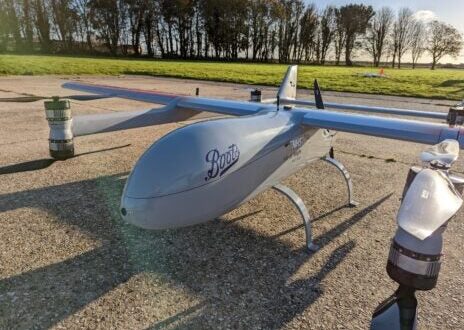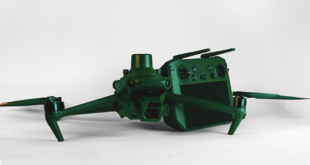Boots has become the first community pharmacy in the UK to transport prescription-only medicines by drones. The company today revealed it completed a test flight that took the medicines from the British Army’s Baker Barracks on Thorney Island, near Portsmouth, to St Mary’s Hospital on the Isle of Wight.
Working with medical drone start-up Apian, Boots was granted permission by the Civil Aviation Authority (CAA) to fly the drones in segregated airspace between the mainland and the island.
Why is Boots using drones for prescription drug delivery?
Boots says it is assessing the potential wider use of drones for the delivery of prescription medicine, joining the Isle of Wight’s NHS Trust, which is trialling the use of unmanned aerial vehicles (UAVs) to take delivery of chemotherapy treatments from Portsmouth. The pilot, which was announced on the NHS’ 74th anniversary, also involves Apian as a private partner.
Boots CIO Rich Corbridge said today that drones have a huge potential in the delivery of medicines and that the company is excited to be the first pharmacy in the UK to transport them in this way. He also explained that the Isle of Wight was a “sensible place to start a trial of drones” because of the clear value of delivering medicines to remote locations.
The CIO continues that Boots is looking at how much time it can save by using drones in its supply chain as well as economic efficiencies: “We want to prepare now for the wider use of this technology in the future.”
The Boots trial is using rotary wing drones. These are particularly useful for landing in areas with limited space, explains Dr Reza Mohammadkhani, assistant professor in the School of Engineering and Informatics at the University of Sussex. “The rotary-wing drones are more popular because they can take off and land vertically – no need for a launcher or runway,” he says. “They are best suited for more precision manoeuvrability applications.”
However, Dr Mohammadkhani says, these types of UAVs “require more mechanical and electronic complexity leading to more complicated maintenance, decreasing operational time, and increasing costs.”
Remote islands using advanced tech for reliability and connectivity
Remote areas are unsurprisingly popular when it comes to testing the potential of UAVs. The NHS pilot on the Isle of Wight was launched because the island’s hospital trust believes it can be more efficient with treatments, which have a short shelf life, and cut delivery times from four hours to 30 minutes, as well as saving on fuel. Each drone delivery replaces at least two car journeys and one hovercraft or ferry journey per delivery.
Content from our partners



Royal Mail is also trialling drone technology for deliveries to the Shetland Islands, the Orkney Islands, the Isles of Scilly and the Isle of Mull. It said that the use of drones increases the reliability of delivery, especially in foggy conditions, as well as providing additional connectivity for remote communities.
Research has found drones also have lower carbon emissions than conventional air freight and other forms of traditional transport such as cars and ferries.
Drones are not a ‘one-size-fits-all approach’
The NHS and Royal Mail are just two examples of companies using drones for delivery, but some are concerned that companies are taking a tech-first approach to a business problem.
According to McKinsey, over the past three years, there have been more than 660,000 commercial drone deliveries to customers – not counting test flights. It also estimates that more than 2,000 drone deliveries were occurring every day in 2022 but advised that the growth rate was accelerating weekly.
“We project that there will be close to 1.5 million deliveries in 2022 as a whole, up from just under half a million in 2021,” Mckinsey said in a blog post.
However, while the drone economy appears to be ready to take off, McKinsey warns that there will be three defining factors in future uptake: how drones are regulated; whether the public accepts them; and the cost of delivery by drone.
Seb Robert, CEO and founder of Gophr says it is unlikely drones will be a “silver bullet” for deliveries to hard-to-reach areas. “There are some amazing examples of drone delivery working well and providing a vital service – medical deliveries in the Australian Bush for example,” he says. “The trial location of the Isle of Wight makes perfect sense; hard-to-reach areas are where drones come into their own.”
However, he’s concerned that those taken in by the benefits drones bring will use the technology in places where it’s not suitable such as in urban areas: “Navigating through tower blocks, high streets and busy city centres is going to take very smart programming or a skilled pilot to avoid unexpected obstacles,” Robert adds. “It’s not a one-size-fits-all approach.”
 Unmanned Aerial Vehicle The latest drone news
Unmanned Aerial Vehicle The latest drone news





